The time signature 7/4 is an unusual, but popular meter in classical music. It has been used many times in popular music too. 7/4 contains measures (or bars) that have 7 quarter-note beats. Music in 7/4 time has an irregular count and can be thought of as a ‘2, 2, 3 count’ or a ‘3, 2, 2 count’.
We’re going to dive straight into 7/4 time, but you can find more info on what a time signature is in our complete guide to meters.
What is time signature 7/4?
The time signature or meter 7/4 is shown in the music as a 7 above an 4.

This comes before the music starts but after the clef and key signature. The ‘7’ stands for 7 beats per measure and the ‘4’ tells us that each beat is a quarter note. This means that the notes in each measure will add up to seven quarter notes.
See if you can spot the seen quarter-note beats in this line of music.

Now here it is with the beats labelled.

7/4 Is A Complex Time Signature
There are three broad types of time signature: simple, compound and complex. Simple time signatures have strong beats that divide into two. Compound time signatures have strong beats that divide into three and complex time signatures have a mixture of beats.
In the time signature 7/4, the quarter notes are grouped into three strong beats. As there are seven in total, they have to be grouped as 2 + 2 + 3. This makes 7/4 a complex meter as the three strong beats are not equal in value.
To learn more about these type of meters check out our guide to irregular (complex) meters.
As we have two groups of 2 and a group of 3, we could arrange these in two ways:
- 2 and 2 then the 3. Counted as 1…&…2…&…3…&…a
- The 3 then 2 and 2. Counted as 1…&…a…2…&…3…&
The image below shows how the strong beats in 5/4 can be arrange in two different ways.
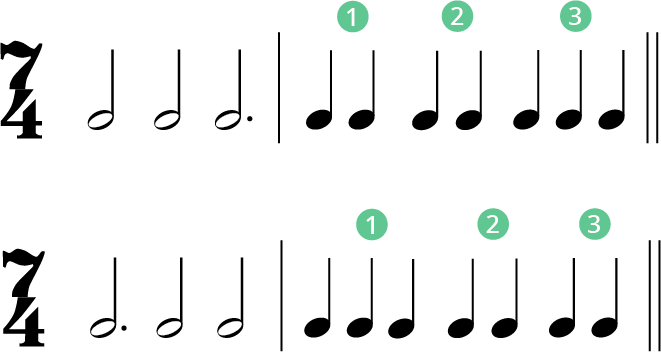
It is worth remembering that a piece of music will usual stick to one version of 5/4 for the whole piece. However this is a convention and not a strict rule.
Another convention is that we do not put the 3 beat in the middle of the bar. So it would be we usual to count 7/4 as a 2 then 3 then 2 count.
How to count in 7/4
7/4, like all meters, has a distinctive feel to it. We count 7/4 as 1…&…2…&…3…&…a or as 1…&…a…2…&…3…&. The short piece below contains more complex rhythms with a variety of note lengths. Can you spot where each beat falls?
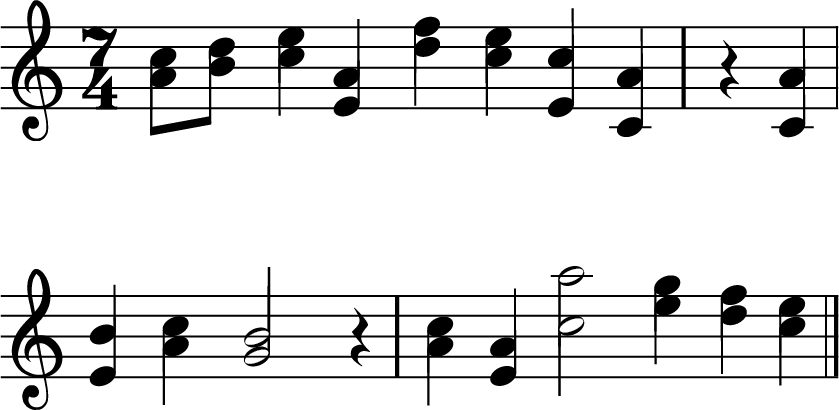
Now here it is with the counting added in.
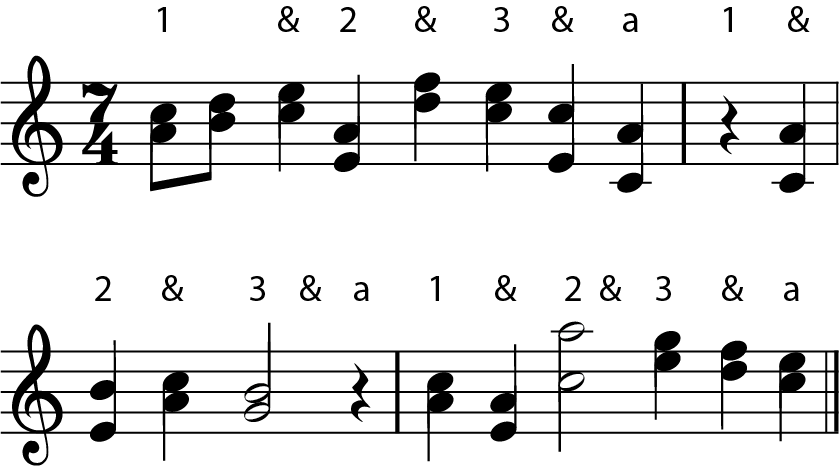
Songs with In Time Signature 7/4
Pink Floyd – Money
Soundgarden – Spoonman
Peter Gabriel – Solsbury Hill
Ear Training and Meters
To develop as a musician you’ll want to be able to recognise time signatures by ear. This is where ear training comes in, as the more you practice, the better your’ll get.
My recommendation for this is Tonegym as they have a comprehensive and fun program for training your ears. It’s what has gotten the best results with for my own students.
They have a great game called ‘Rhythmania’, were you have to read rhythms in different meters and tap them back using the spacebar. I like how Tonegym structure the game so it always gives you the right level of challenge.
For an in-depth look at ear training, here’s my full review of Tonegym.
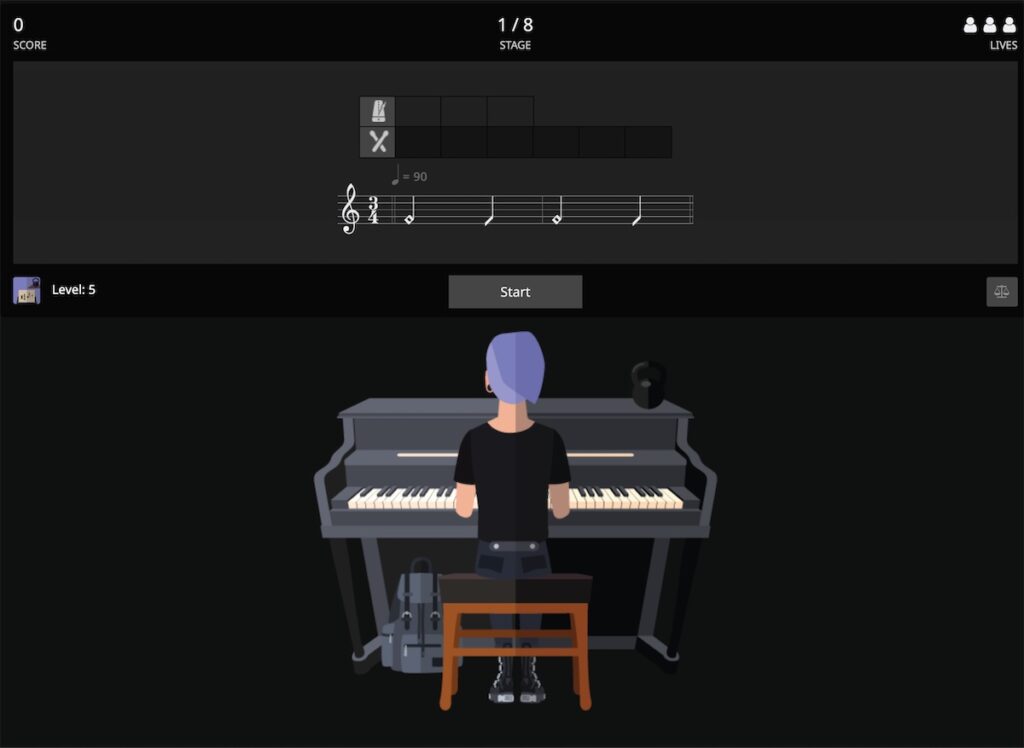
What’s the difference between 7/4 and 7/8?
Time signature 7/8 has seven eighth-note beats per measure. 7/4 also has seven beats per measure, but they are quarter-note beats. Both are complex meters as they have a mixture of simple and compound beats.
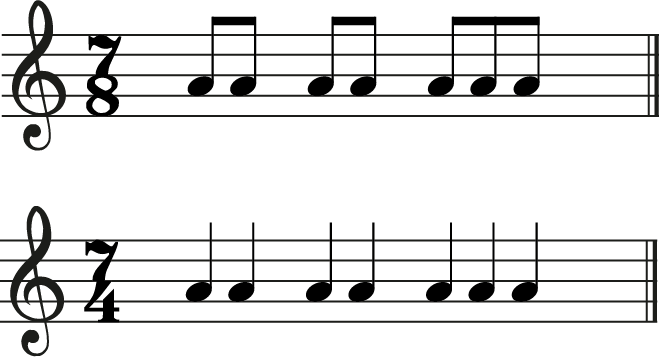
So when do we use 7/4 and when do we use 7/8. As a rough rule, a piece with a faster tempo is more likely to be in 7/8, whereas a slower piece may be in 7/4. This is not a strict rule and it is very much up to composers and transcribers how to decide this.
What next…?
If you want to learn more about time signatures, check out our complete guide to meters.
